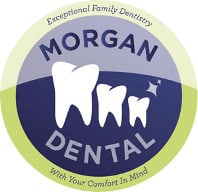When you receive veneers, you are making an investment in your mouth. Please take the following steps to ensure that your veneers will last you for years to come.
Brushing
- Brush twice a day for at least 2 minutes.
- It is possible to get a cavity under your veneer. Pay special attention to your gumline. Plaque and bacteria at your gumline will lead to decay that can cause your veneer to fail.
- A mechanical or ultrasonic brush, such as Sonicare, will help you to adequately remove plaque and bacteria. In addition, most electric brushes have a timer that assists you in brushing for a full 2 minutes.
- Pay special attention to the area where your veneer meets your gums. This area can trap bacteria and plaque which can lead to a cavity under your veneer.
Flossing
- Floss all of your teeth at least once a day.
- Make sure that you insert your floss in between each tooth. You should hear a “pop.”
- Wrap the floss around each tooth and move it up and down to loosen and remove food and bacteria.
- Use a new section of floss for each tooth.
- Floss fingers and other appliances available at the grocery store can help you reach your back teeth easily.
- Waterpicks and AirFloss (by Sonicare) devices are useful to help keep the bottom area of the open space between your teeth clean. You must still floss the contact where your dental crown and adjacent teeth meet (the “pop” area described above).
Fluoride
- Prescription strength fluoride can prevent new cavities and reduce gum inflammation caused by bacteria.
- Fluoride also reduces tooth sensitivity and soothes discomfort after tooth whitening.
- Fluoride is available in gel, rinse, and toothpaste forms as well as multiple flavors and strengths. Our dental hygienist and Dr. Morgan can help you choose the fluoride that is best for you.
Dental Visits
- You should visit our office at least twice a year for professional dental cleanings or more often if directed.
- At least once per year x-rays will be taken and each tooth will be checked for cavities, cracks, and infection by Dr. Morgan. Please call our office at any time if you are experiencing any tooth problem or wish to see our hygienist or Dr. Morgan. We are here to help.
Whitening
- In order to keep your natural teeth the same color as your new veneers, periodic whitening is recommended.
- The most economical way to keep your smile white is to use custom whitening trays with a strong whitening solution. Daywhite whitening syringes or other whitening products can be purchased for a minimal price.
- Most patients find that the best time to whiten is after a professional dental cleaning. Your teeth are plaque and tartar free thus allowing your teeth to respond positively to the whitening gel. Let your teeth be your guide on how often you should whiten.
Occlusal Guards
- Clinching and grinding exerts pressure that can be generated across the teeth that can range from 100 to 600 psi (pounds per square inch). That incredible amount of force can cause many different problems related to your gums, jaw, and teeth.
- Clinching and grinding when you have multiple porcelain restorations can cause cracks and fractures to your natural teeth. Porcelain by nature is a harder material than natural enamel.
- An occlusal guard is an appliance designed from dental models of your teeth and made of a rigid plastic. It covers either your upper or lower teeth and prevents the teeth from coming together while sleeping at night. It also provides a guide for your jaw so that muscles can relax and bite problems will not trigger the bruxing action.
Want to learn more? See Veneers.
